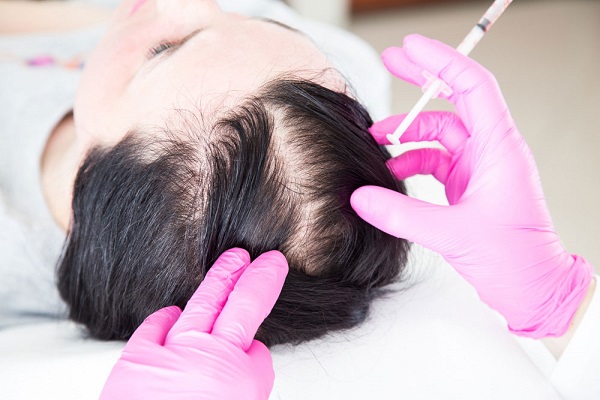Most women who are experiencing hair loss suffer silently. They change their hairstyle or trim their hair to hide the patches or thinning. When you show extra care and attention immediately after noticing hair loss, you can see a lot of positive results. When you keep delaying or neglect the hair loss issue, it can result in serious problems. It also becomes complicated to treat.
How hair loss affects women?
Hair loss in the female is mostly due to genetic components or when the father or mother has this issue. The medical term for this issue is Androgenetic Alopecia. This kind of hair loss issue usually begins at the late teenage stage and when it starts earlier, there are chances of severe hair loss.
More Info About : What Is Dermatology?
The majority of females with pattern hair loss do not get a bald spot on the upper part of the scalp or fading hairline just like men. They would notice clear thinning of hair over the crown. In women and men, hairs are miniaturized due to a short growth cycle and the hair remains on the head only for a short time. Such wispy hairs almost like forearm hairs would not accomplish growth to its usual length.
The first symptom of hair loss you can notice is a thin ponytail or widening of the partition.

What are the treatment options for hair loss?
To treat female pattern hair loss issues, Minoxidil 5% is recommended medication. This medication is FDA approved. Some people also try over the counter liquid options. Minoxidil functions by extending the growth stage of hair- offering sufficient time for the hair to develop to its full level. It is important to remain patient since you can see noticeable results only after three or four months. Moreover, you should also use the product daily. If you take early treatment, you can see its results early.
What is the difference between normal hair loss and severe hair loss (that requires treatment)?
When noticing hair loss, most women doubt whether it is normal or requires treatment. The scalp consists of around 100,000 hair strands. It is common to notice growing hair that accounts for about 80% to 90% of hair. The remaining 10% to 15% corresponds under hair fall. If your hair growth is more than hair loss, then your hair loss case comes under the above normal category. It is best to check by seeing the amount of hair on the comb, pillow, and shower. If you see an increase in loose threads, you need to consult your dermatologist. They will further analyze and suggest medications.
Is it possible to reverse baldness?
There are chances of reversing the baldness. However, it mostly depends upon the level of your baldness. Treatment with topical and oral medications helps in controlling this issue to a very good extent. If the dermatologist notices the presence of scars, there are chances for the treatment to avoid the progression. When there is no scarring, the follicles produce darker and thicker strands, reflecting strong and healthy hair.






